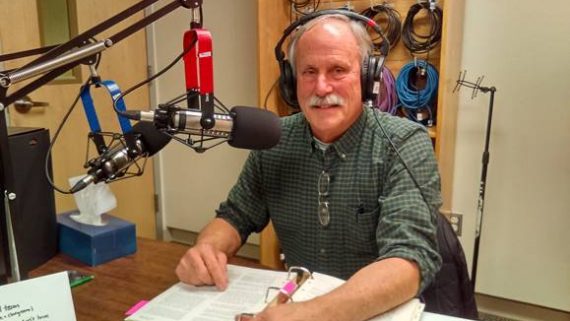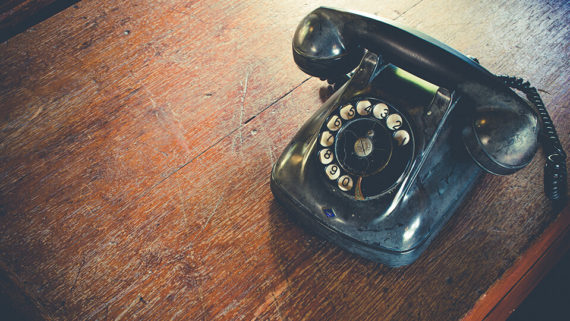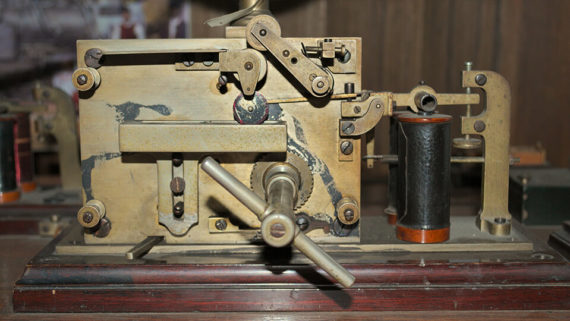How Long Distance Calls Work: Calling a Country Far, Far Away
How Long Distance Calls Work: Calling a Country Far, Far Away
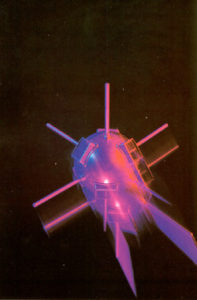
Image of the Telstar communications satellite (THG file photo).
The Basics
Long distance calls work similarly to regular calls, and for an overview of phone calling in general, please refer to How Phones Work. Go ahead. We’ll still be here when you return.
Now, something to remember is that we’re talking long distance in the United States, and then we’re also talking really long distance to other countries. Many countries are small enough that they don’t have internal long distance calls—all “long distance” calls are international calls, and if you ask about long distance charges, you’ll get very strange looks and everyone will know instantly that you’re a foreigner (if they don’t know already). Again, though, the principal is the same.
Let’s start with a bit of history. Back in the early days of telephony, any call you made had to be routed through a human operator at the central office. This was true of any call, even to your neighbors. You’d pick up the phone, the operator would be alerted that you wanted to make a call, and then she’d connect your phone line and your neighbor’s with a piece of wire (perhaps after connecting to their line herself just to make sure they wanted to take your call).
If you wanted to make a long distance call (say, at that time, to the next city or town), the operator would connect to a special long-distance office through a special line, where an operator would connect your call to the long distance office of the city you were trying to reach. The operator in that city would connect you with the exchange for the person you were trying to reach, and, finally, an operator would connect your ever-extending line to your friend on the other end. Your initial operator on your end might do all the legwork while you waited or went off to do something else; she would ring you when your call was ready to be completed.
When mechanical switches began to be used, first the local operator and then the whole system was replaced by switches and, eventually, computers. This process took decades, and for a long time you still needed to dial “0” to get the operator for long distance calls. (For more on how mechanical phone switches operate, see How Phones Work.)
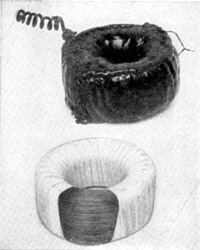
Loading coil and interior showing coiled wire (from Beginnings of Telephony by Frederick Leland Rhodes, Harper & Brothers, 1929).
What’s with These Wires?!?
Even with Edison’s invention of the carbon transmitter (again, see How Phones Work for more), the transmission distance for calls was limited. In 1892 the first call was made between New York and Chicago, but calls really couldn’t go much further. Then an inventor named Michael I. Pupin invented (and patented) the loading coil, a device made of electromagnets that could strengthen an electronic signal; with enough loading coils wired into a circuit, and wired properly, the signal could reach 1,500 miles—from New York to Denver—before degrading so far as to be unfathomable. (Interestingly, AT&T and the Bell System were so ashamed at having lost out on this technology to a lone academic inventor that they formed the now-famous Bell Labs [see privateline.com for more].)
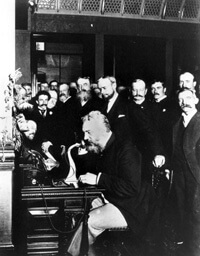
A.G. Bell participating in the first transcontinental call from New York to San Francisco, January 25, 1915 (THG file photo).
Of course, one line did not a long distance infrastructure make, but over time long distance wires were strung all over the country. Starting in 1937 coaxial cables started being used, moving long distance lines underground, and in 1951, the Bell System’s first direct-dialed long distance trials were begun in Englewood, New Jersey.
Wires Over the Ocean?
Given that you could make longer and longer calls (distance-wise), the next obvious expansion to phone service was not merely transcontinental, but transatlantic. The challenge here was that there was no way you could string an overhead wire across the ocean; there were no convenient islands spaced a few hundred yards apart reaching all the way from the US to England (wouldn’t that have changed the history of exploration!), all ready to have phone poles stuck into them.
Another option was to try to bury all the wires under the ocean, laying a cable all the way from the US to England, but in the early 20th century this was unfeasible for technological reasons. Although the English had successfully laid cable between England and France in 1891, the distance involved in a transatlantic cable proved too much of an obstacle; the signal over the cable would become far too weak too quickly, and the amplifiers and repeaters and such-like equipment that were necessary to boost the signal wouldn’t work underwater. In addition, creating and laying such cable would have been extremely expensive.
So the solution? Creating the first transatlantic radio-telephone service!
If you’ve read the “How Cordless and Cell Phones Work” article in this area of the museum, you already have an idea how this worked. First you would change your voice (sound waves) into electricity, as in a normal phone. Then this electricity would be converted into a radio wave, just like those used by radio stations but on a different frequency, and the radio wave broadcast to a receiver. The receiver would reverse the process, taking the radio wave and converting it back into electricity, after which it would be sent down the phone lines to the person on the other end.
Exactly how a radio transmitter works, and the history of radio, is beyond the scope of this article, and more information can be found in the LINKS section below. At its most basic, however, what happens is that the varying electrical current carrying your voice is encoded by the radio transmitter onto a sine wave operating at a certain frequency. This sine wave is broadcast into the air. At the other end, an antenna is set up to “receive” (or be struck by) the sine wave. Your voice information on the sine wave is then decoded and changed back into electrical current.
In 1915, Bell engineers achieved the first brief voice transmission across the Atlantic, between Virginia and Paris, but it took 11 more years for the British Post Office and Bell Labs to get the system to work well enough for commercial use, and it wasn’t until January 7, 1927 that commercial radio-telephone service began between New York and London. Once that was up and running, however, the service spread rapidly throughout North America and Europe.
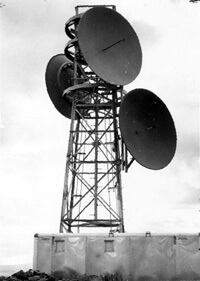
Microwave tower at Melville, Montana (THG file photo).
Over the Short Waves…
Even though radio-telephone service worked, it wasn’t perfect. The number of calls that the system could carry was quite limited, which made calls very expensive–$6 per minute in 1928. The technology was also susceptible to interruptions and bad reception due to atmospheric and solar disturbances.
Finally, in the 1950s enough technological advance had occurred to improve long distance significantly. One such advance was to use microwaves instead of the longer radio frequency waves used in earlier radio-telephony. Microwaves are much shorter in wavelength, which offers several advantages. First and foremost is that microwaves are more easily packed into a tight beam for transmission, and thus can travel further with less loss of information. Second, microwave transmission takes less power than a comparable longer-frequency transmission. And third, microwave signals aren’t as susceptible to deterioration in bad weather, making them useful during all times of the year and all weather conditions.
All this lead to microwave towers all over the US for internal long distance, starting in 1951 with the Bell System’s traditional link between New York and San Francisco. It took over one hundred microwave towers spaced 30 miles apart and cost $40 million, but it was well worth it, and by the late 1950s a quarter of US long distance calls went through Bell’s microwave system.
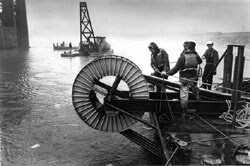
Crew laying nautical cable (THG file photo).
…And Under the Long Waves
As wonderful as it was to have microwave relays all over the US, it did nothing for intercontinental communications. You see, the one major disadvantage to microwave transmission is that it is line-of-sight—that is, if anything really solid gets in the way, like a hill or an exceedingly thick grove of trees, the microwave signal is blocked. But wait, isn’t the ocean flat? Sort of. But another issue comes in when travelling very long distances across the earth—the fact that our planet is round. Any direct line of sight is going to have problems with the curvature of the earth at long distances, even if our planet were as smooth as a billiard ball (see diagram). This was solved on land by placing the towers relatively close together. But you can’t set up relay towers on the ocean. This was the same problem as that faced by the original idea of a transatlantic cable—you couldn’t set up repeater stations on dry land every few miles, as there wasn’t any dry land, and the repeaters couldn’t be placed underwater.
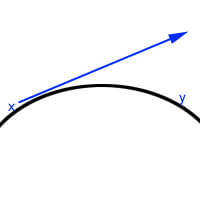
Diagram showing the curvature of the Earth and the impossibility of line-of-sight communications over long distances (Telecommunications Virtual Museum files).
Of course, two great feats were required here: making the cable and then laying it in the ocean. It is a long story, and you can read the whole thing at www.sigtel.com. For our purposes, however, we can skip ahead three years to the successful completion of the cable in 1956. Suddenly the transatlantic phone system nearly trebled in capacity (including the old radio-telephone service), and although it cost $42 million, it was deemed such a success that more and more transatlantic cables have been laid, despite the development of satellite technology in the 1960s.
Over Our Heads
So basically there are two ways in which long distance phone calls work. First, they can be routed entirely over land and under sea, entirely by wires and cables. And second, they can be routed through the air, which up to the early 1960s meant radio and microwave. The airways were less effective for really long-distance calls, though, because of the curving-earth problem.
Besides somehow making the earth flat, there was one other way to solve the problem: put a tower up so high that its line-of-sight couldn’t be blocked. And as there was no conveniently stratospherically high mountain on which to mount such a tower, the solution was the satellite.
The length of time between the first satellite, the Soviet Sputnik in 1957, and the launch of the first commercially-sponsored telecommunications satellite, Telstar I in 1962, was incredibly brief, a product of the Cold War between the US and the USSR. Interest in space and space technology spiked in the late 1950s, and AT&T, NASA, Bell Labs, the British Post Office, and the French National Post Office used this to great advantage, launching a revolution in wireless communications. Now not only could international telephone calls be routed entirely through the air, but television programs could be sent as well. (As a side note, the first truly commercial telecom satellite was Early Bird, later renamed Intelsat 1, launched in 1965.)
In effect, a communications satellite acts just like a relay tower, switching and relaying and amplifying calls from an extremely advantaged position. A signal beam from the ground carries the radio waves to the satellite, which then beams the beam back to a ground receiver station that then sends the various calls and bits of other information on their way to their destinations. Alternatively, the first satellite can send the signal to another satellite orbiting over another part of the world, and it can then send the information to the ground or to yet another satellite or, even, to a ship in space or to another planet. The sky, in other words, is not the limit.
Interestingly, AT&T (and thus the Bell System) was not allowed to obtain a monopoly over satellite communications, as it had over ground communications. Although Telstar I was very successful and AT&T sponsored the launch of other satellites, on August 31, 1962 President John F. Kennedy signed the Communications Satellite Act, creating a new corporation called Comsat (the Communications Satellite Corporation), which then controlled satellite communications and development. In 1964, another group called Intelsat (the International Telecommunications Satellite Organization) was created internationally, although Comsat held over half the votes on Intelsat’s board of directors and thus could control it as well. By 1969, the entire world could be linked by satellites put into orbit by Intelsat.
The Future Is Now
Since 1969, long distance has kept basically the same shape—some calls going over wires and cable, others via microwave and satellite—and the technology has improved. Nothing has had the huge initial impact that satellites did in the 1960s, or the first transatlantic cable in the 1950s, but our long distance calls have become more reliable, higher quality, and faster due to better wiring (such as fiber optic cables, which use light instead of electricity [see BT’s Connected-Earth for a wonderful demonstration of how fiber–or “fibre” in England–optics works] and are thus much faster at conducting calls) and a proliferation of satellites using better and better computers and computing power to process phone calls, television images, and much more. In fact, even the Internet runs through these communications channels.
At this point, it would appear that future improvements are going to be of this kind—that is, more of quantity and quality than of vastly different technologies changing the way things are done. The earth has become a web of communications lines, wrapping around it like thread wrapping around a ball; soon, if it isn’t already, it will be one great silvery glow of communication.


